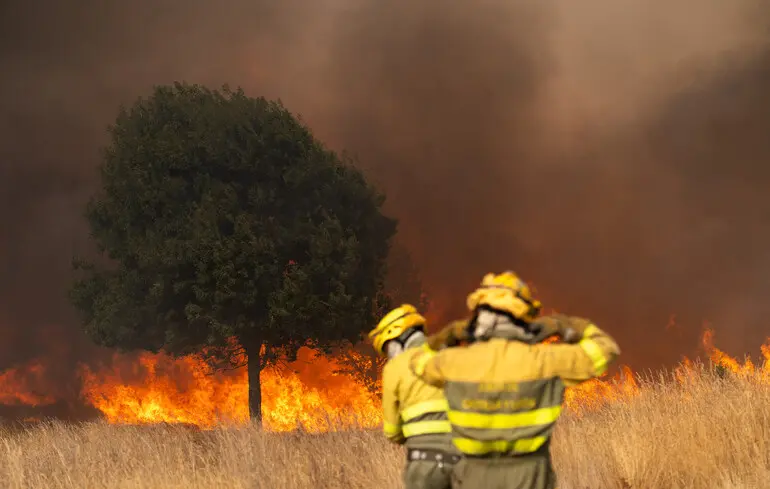Forest Fires in Spain: Large-Scale Evacuations and Preservation of Natural and Cultural Heritage

In northern Spain, specifically in the Castilla-Leon region, the situation with wildfires has escalated into a major environmental crisis.
Over 1,600 residents have been forced to evacuate their homes amid efforts by local authorities.
The fires started near the town of Yeres and rapidly spread due to high temperatures reaching up to +40°C and strong winds gusting at 50 km/h.
Several settlements, including Caredo, Orelian, Venusa, Santa-Lavilla, and Llamas-de-la-Cabria, fell under the flames’ reach.
Most evacuated individuals found shelter in sports halls and dormitories in PONFERRADA.
Beyond human safety, these fires have caused significant damage to unique natural and historical sites, especially the Las Medulas complex — a UNESCO World Heritage site since 1997, renowned for its ancient Roman gold-mining landscape.
During the first to third centuries AD, Romans employed hydraulic techniques to extract gold, profoundly transforming the terrain.
The result was striking red cliffs and ridges that now serve as a rare combination of natural beauty and cultural history.
The fire broke out on August 10 and quickly engulfed multiple localities, destroying areas of land, buildings, and parts of the park’s natural environment.
Authorities have mobilized ground crews, aircraft, and military units in efforts to combat the flames.
Despite these efforts, the weather remains hostile — heat and wind sustain the high risk of further outbreak.
Similar wildfires have been recorded in other regions of Spain, raising concerns about the country’s forest health.
According to recent research from the University of Maryland, last year marked a record in forest loss globally, with approximately 6.7 million hectares of primary tropical forests destroyed — comparable to the size of Italy or Panama.
Researchers also found that forest areas were vanishing at a rate of nearly 18 football fields per minute, with fires consuming five times more forests than in the previous year.
Most of these fires are human-induced, mainly due to land clearing for agriculture and deforestation, highlighting the urgent need for sustainable forest management and environmental protection.

